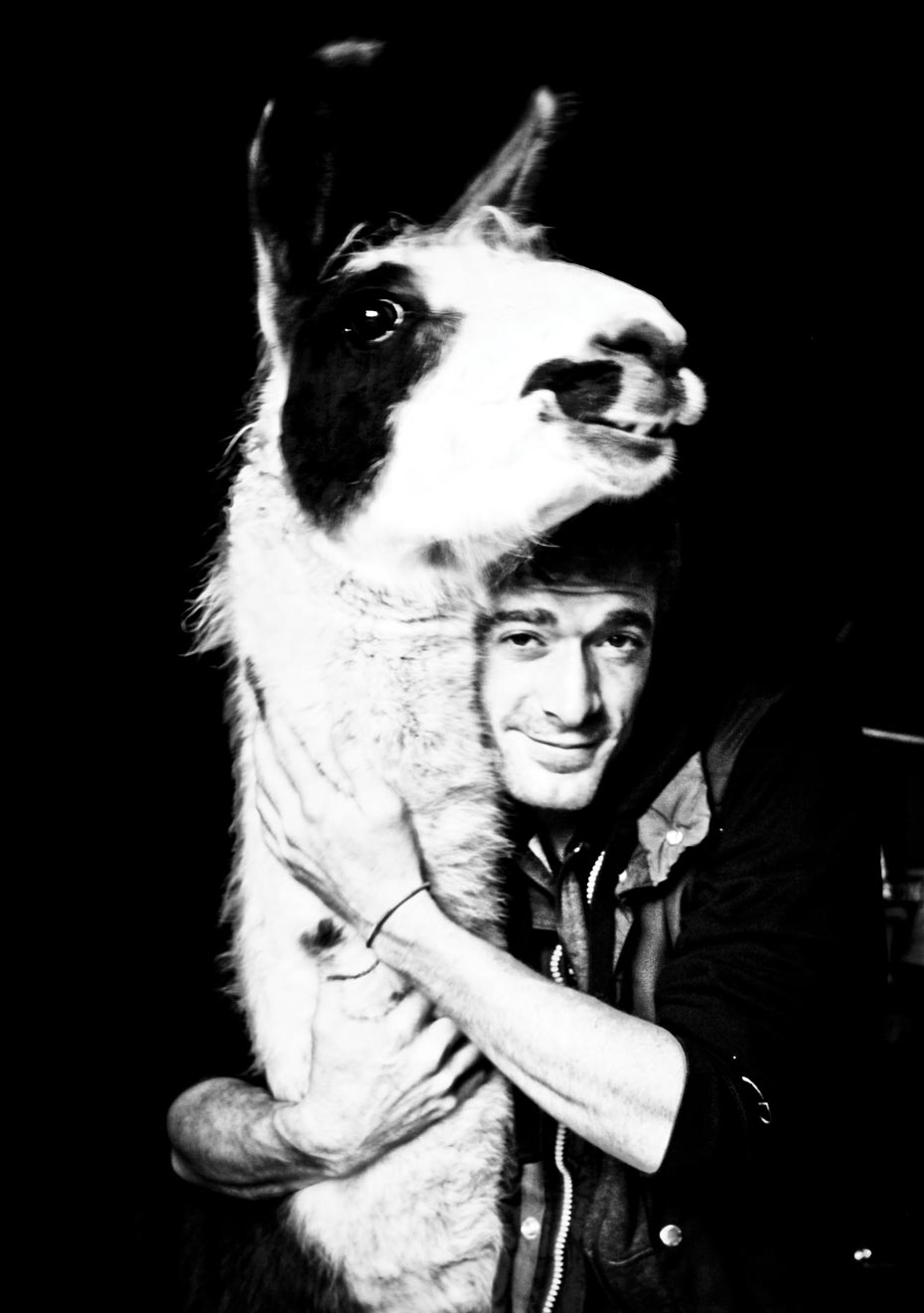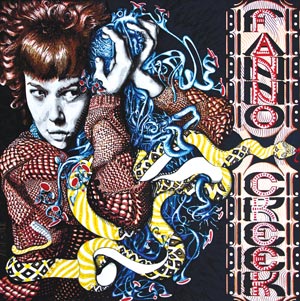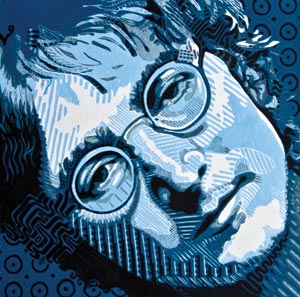Portland Artist Curtis Owen


Somewhere in Beaverton there is a llama farm. On this llama farm there is a family of artists. One of these family members is Curtis Owen. A fine printmaker, illustrator, and painter. He has a promising artistic future. An air of humbleness makes Mr. Owen seem quite mysterious. It seems that the truly gifted and the most successful people always have a quiet way of dismissing praise in the kindest way possible. I’m eager to see what the future holds for this up and coming mixed media illustrator.

ELEVEN: What is your medium?
Curtis Owen: It’s ever changing. For the last ten years it has been ink mainly because of the control that ink allows. A lot of my artwork is very exacting and there’s a lot of perfection there. Only recently I have turned toward using paint. I never went to paint before because it’s pretty messy and there’s a clean up. It gets all over the place and there’s a lack of control because you never really know what’s going to go down in color theory. Color theory is a very difficult thing to wrap your brain around. It’s difficult to figure out. I’ve been really enjoying paint so far though. I like it when things match and I use a lot of tritone color palette. If there are too many colors happening I feel like it might take away from the theme of the piece. Kind of like Picasso with his blue period. I already get overly concerned with design and if I start shoving too many colors into there also things could go wrong. I also really like doing linoleum cuts. It’s a neat medium because you can make a very 3-D looking image from just three blocks.
11: How did you make the switch from ink to paint?
CO: Just through experimentation. The art I do is actually just constant experimentation. I never know what the finished product will be until it’s finished. The art piece changes a good bit a number of times before it’s finished.

11: Where do you think creativity comes from?
CO: A muse? The muse is a huge influence. There is also a natural draw to create art for a lot of humans also. It’s something that humans are really adept at doing. There’s something so soul gratifying about art. It is harder than the construction work that I do. It’s a struggle to do the art because you’re constantly managing expectations of your own creativity. It is very gratifying and I am happy if I can satisfy my own expectations. An excuse to exhaust my creative faculty, really. Art has always been heavily encouraged in my family. My brother is an architect and the other half of my family are scientists. My mom’s also an artist.
11: What are your biggest inspirations and when do you feel most inspired?
CO: It comes and goes as it wants. Let’s say you like to go camping. You go for a few weeks and then you miss society and you go back to town. Yeah you’re happy to be back in town and then you’re sddenly itching to be back in nature again. I think the same thing can happen with art. I will work on something for a few weeks and then suddenly I can’t stand to put paint down any more. Then again if I’m away and the accessibility to do art isn’t there then I really start to miss it. Often, when I’m out traveling the world this happens. I mean, it’s constant stimulation to travel through third world countries but you don’t have access to a sanctuary or other place where you are able to express yourself.
11: Where have you traveled?
CO: Last summer I was in Turkey and Greece. The year before that I was in Laos, Cambodia, Thailand and India. Before that I was in Nicaragua and Costa Rica and then I popped backand forth between California and here a bunch.

11: Which country do you feel closest to?
CO: India hands down. If you want to go somewhere where you feel completely out of your element and have total culture shock then India is the place to go. At the same time its the friendliest and most dangerous place to go. 3000 years of history and it’s completely okay to stare at people. Whole families will just stare. After a while its actually very comforting. The country has like 200 languages, it’s extremly diverse. You can go to one city and it’s like packs of dogs, monkeys and cows inside the city. I was staying in one house above the pyres where the ancient traditon of burning bodies happens. Every time I would get back to my place it was like hey okay so burning bodies, alright.
11: So who are your favorite artists?
CO: I really love the style of art nouveau. Edward Munch and the guy who did “The Kiss” um, Klimt. The German biologist Ernst Haeckel.
11: Who are the people in your paintings?
CO: I’ve always been drawn to music influences because music influences me. Portraiture is my main thing. I really like the human face. The human face is the most recognizable form in the universe. There is so much expression held in the face. The faces in my pieces are suspended by the rest of the art. My real creative design goes into the artwork around it. Sometimes I feel like I should move more toward artwork that is completely design oriented with no particular subject matter or person. It would probably get very complicated very quickly. A quote I like is “Art is making mistakes, good art is knowing which ones to keep” (Scott Adams). I find that to be very true. There’s a lot of chaos while I’m trying to make something and I kind of think of myself as a filter. I often look at other pieces of art and filter it through… me.
11: do you have a theme that you carry through your work?
CO: The yin without the yang. There’s an entanglement with the more blurred side of the self with expression of the muse… that was really deep… »
– Veronica Greene
Find more from Curtis at www.curtiswowen.com



